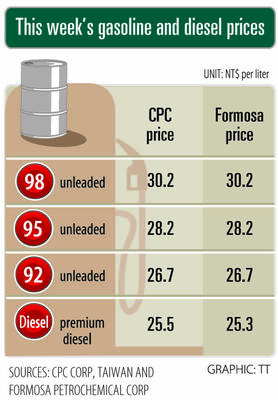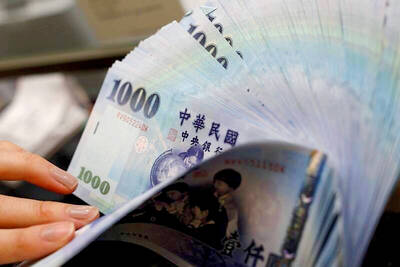Motorola Inc, the world's second-largest mobile phone vendor, plans to launch its first handset with a Chinese name, Ming (明), in Taiwan this month, targeting the fast-growing "Greater China" market, a company official said yesterday.
The move is also part of Motorola's efforts to win the battle with rival Nokia Ojy for the top position in Taiwan's NT$40 billion (US$1.236 billion) phone market.
"The Ming camera phone, designed exclusively for the Greater China market, has gained popularity in China since its launch. We believe local consumers will love it, too," said Tom Hsiao (
Motorola is scheduled to introduce the Ming phone to the Taiwanese market this month, about two months after it debuted in Beijing ahead of the Lunar New Year.
Hsiao made the comments on the sidelines of the launch of its new third-generation (3G) handset, a member of the ultra-slim RAZR series, and showed off a white Ming phone with a touch-screen and a 2-mega pixel camera.
"We plan to sell more middle-and-high end mobile phones this year in order to achieve our goal of safeguarding the number one spot," Hsiao said, adding that the Ming phone was one of them.
Motorola also plans to introduce its first High-Speed Downlink Packet Access (HSDPA) phone to Taiwan in the fourth quarter, having already offered the advanced phones to NTT DoCoMo Inc subscribers in the first half of this year.
HSDPA technology offers operators more than double the system capacity of the current Wideband Code Division Multiple Access (WCDMA) technology and significantly shortens response times for interactive services, drastically improving the user's experience when using broadband services.
Motorola has switched strategies after lagging rival Nokia in handset sales over the past few months. The company, which currently owns about 25 percent of the local market, previously sold large volumes of low-priced handsets, working closely with local operators. But the approach apparently failed to sustain sales growth after several competitors followed suit.
Hsiao said that 2G handsets would still be a driver for the company's sales this year, as migration to pricey 3G handsets would remain slow.
He predicted that 3G mobile phones would account for only 15-20 percent of total handset sales in the Taiwanese market, echoing comments from Nokia's local head, Loren Shuster.
Shuster said at a press briefing on Feb. 27 that the domestic 3G market could be considered a success if the number of users rose to account for 15 percent of total phone sales this year.
Hsiao declined to give details about Motorola's product portfolio for this year.
Handset sales are expected to inch up 4 percent to nearly 7 million units this year, according to the Taipei-based Market Intelligence Center's (

Merida Industry Co (美利達) has seen signs of recovery in the US and European markets this year, as customers are gradually depleting their inventories, the bicycle maker told shareholders yesterday. Given robust growth in new orders at its Taiwanese factory, coupled with its subsidiaries’ improving performance, Merida said it remains confident about the bicycle market’s prospects and expects steady growth in its core business this year. CAUTION ON CHINA However, the company must handle the Chinese market with great caution, as sales of road bikes there have declined significantly, affecting its revenue and profitability, Merida said in a statement, adding that it would

i Gasoline and diesel prices at fuel stations are this week to rise NT$0.1 per liter, as tensions in the Middle East pushed crude oil prices higher last week, CPC Corp, Taiwan (台灣中油) and Formosa Petrochemical Corp (台塑石化) said yesterday. International crude oil prices last week rose for the third consecutive week due to an escalating conflict between Israel and Iran, as the market is concerned that the situation in the Middle East might affect crude oil supply, CPC and Formosa said in separate statements. Front-month Brent crude oil futures — the international oil benchmark — rose 3.75 percent to settle at US$77.01

RISING: Strong exports, and life insurance companies’ efforts to manage currency risks indicates the NT dollar would eventually pass the 29 level, an expert said The New Taiwan dollar yesterday rallied to its strongest in three years amid inflows to the nation’s stock market and broad-based weakness in the US dollar. Exporter sales of the US currency and a repatriation of funds from local asset managers also played a role, said two traders, who asked not to be identified as they were not authorized to speak publicly. State-owned banks were seen buying the greenback yesterday, but only at a moderate scale, the traders said. The local currency gained 0.77 percent, outperforming almost all of its Asian peers, to close at NT$29.165 per US dollar in Taipei trading yesterday. The

RECORD LOW: Global firms’ increased inventories, tariff disputes not yet impacting Taiwan and new graduates not yet entering the market contributed to the decrease Taiwan’s unemployment rate last month dropped to 3.3 percent, the lowest for the month in 25 years, as strong exports and resilient domestic demand boosted hiring across various sectors, the Directorate-General of Budget, Accounting and Statistics (DGBAS) said yesterday. After seasonal adjustments, the jobless rate eased to 3.34 percent, the best performance in 24 years, suggesting a stable labor market, although a mild increase is expected with the graduation season from this month through August, the statistics agency said. “Potential shocks from tariff disputes between the US and China have yet to affect Taiwan’s job market,” Census Department Deputy Director Tan Wen-ling